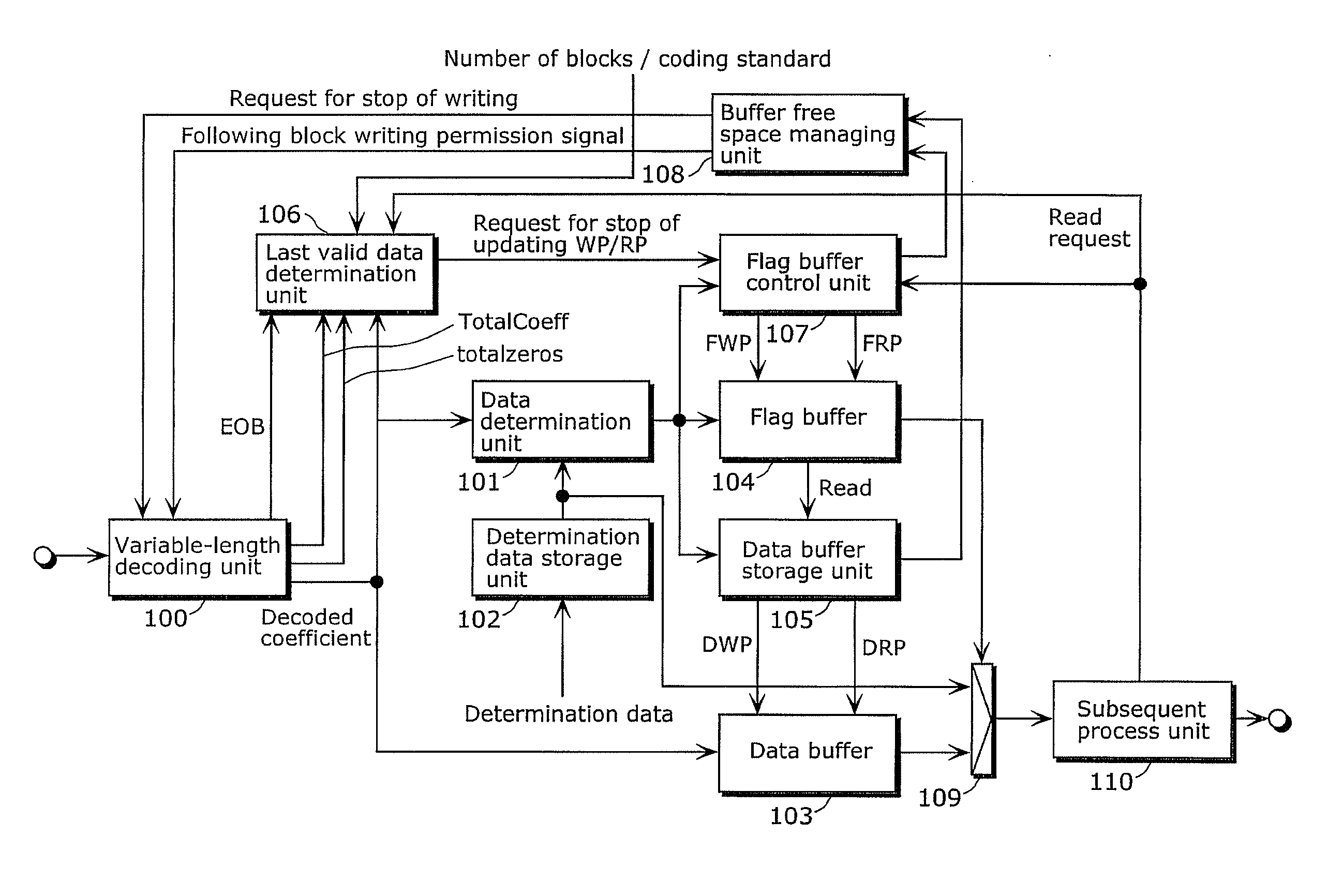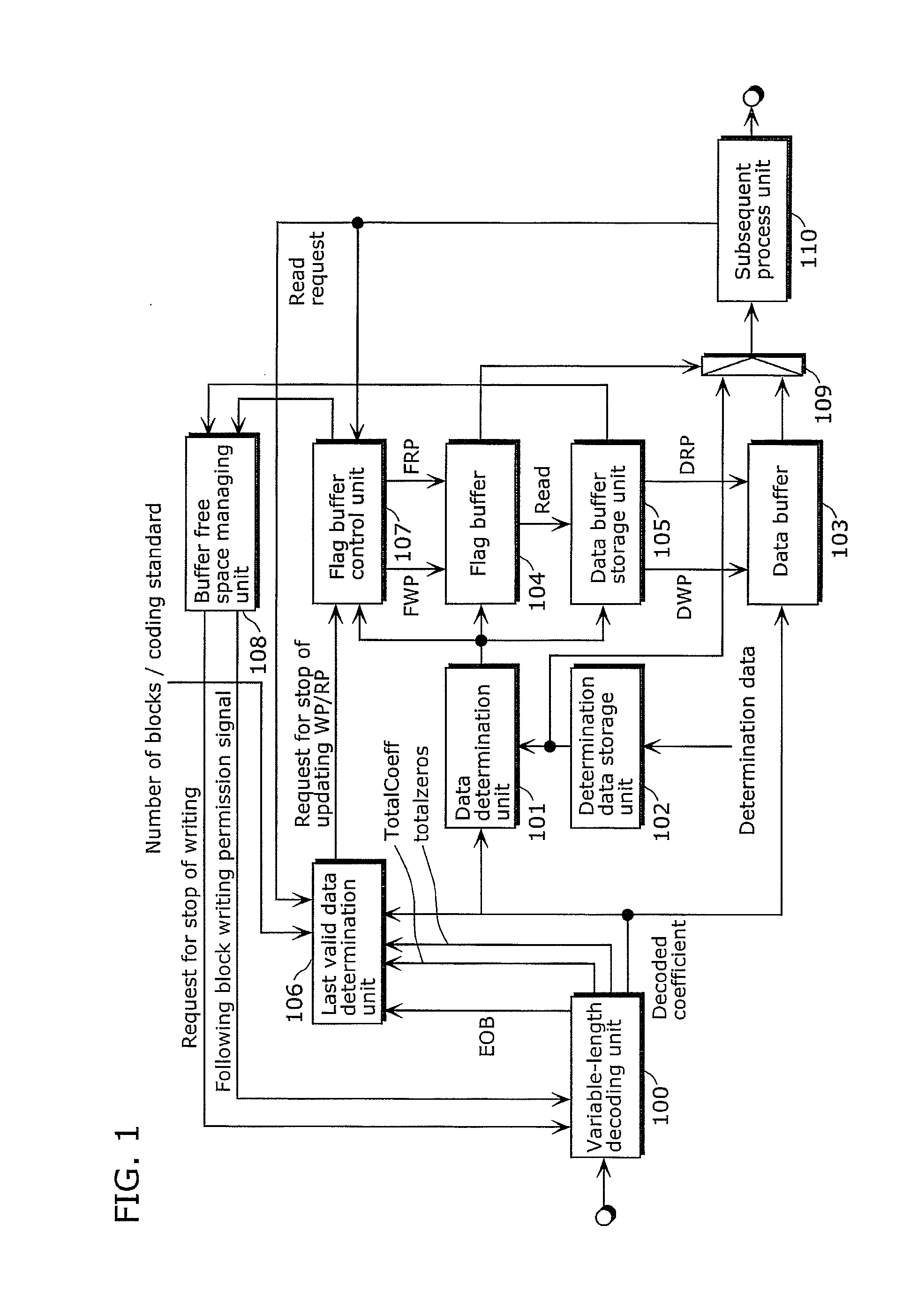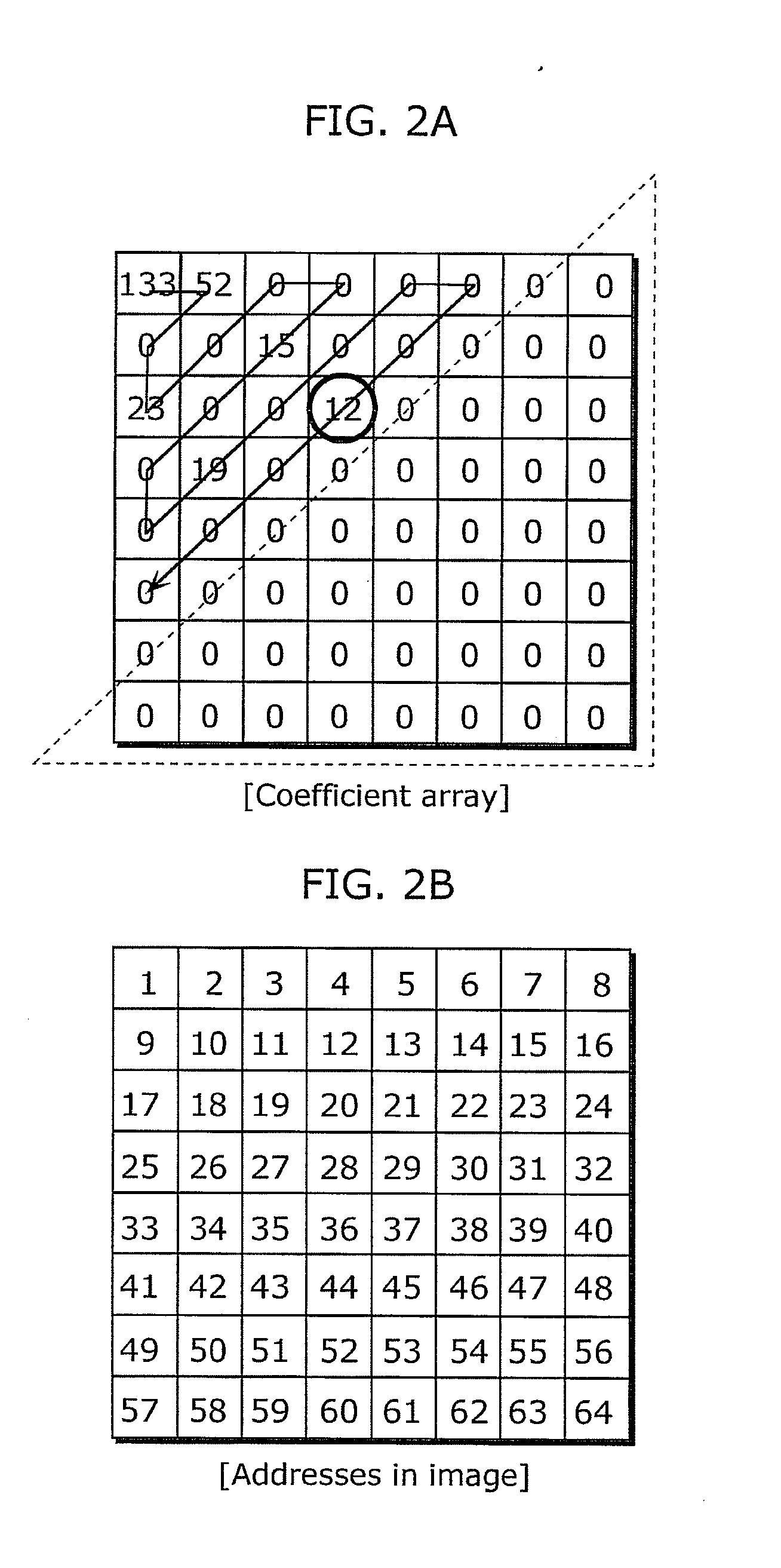Variable-length decoding device
a decoding device and variable-length technology, applied in the field of variable-length decoding devices, can solve the problems of increasing the number of consecutive zero values among coefficients after orthogonal transformation, consuming an information register area, and invalid data located at a data buffer address corresponding to a zero value, so as to reduce power consumption and read data power consumption, the effect of improving efficiency
- Summary
- Abstract
- Description
- Claims
- Application Information
AI Technical Summary
Benefits of technology
Problems solved by technology
Method used
Image
Examples
embodiment 1
[0077]The following describes Embodiment 1 of the present invention with reference to the drawings.
[0078]FIG. 1 shows a configuration of a variable-length decoding device according to Embodiment 1 of the present invention. In Embodiment 1, it is assumed that each block is composed of 8×8 coefficients and video data is coded in an MPEG-2 format.
[0079]Referring to FIG. 1, the variable-length decoding device includes a variable-length decoding unit 100, a data determination unit 101, a determination data storage unit 102, a data buffer 103, a flag buffer 104, a data buffer control unit 105, a last valid data determination unit 106, a flag buffer control unit 107, a buffer free space managing unit 108, a selecting unit 109, and a subsequent process unit 110.
[0080]The variable-length decoding unit 100 decodes coded data into component values (that is, coefficients).
[0081]The data determination unit 101 determines whether or not each of the decoded component values is a specific value. Th...
embodiment 2
[0102]The following describes Embodiment 2 of the present invention with reference to the drawings. The configuration according to Embodiment 2 of the present invention is shown in FIG. 1, which also shows the configuration according to Embodiment 1 of the present invention, and thus the description thereof is omitted.
[0103]A variable-length decoding device according to Embodiment 2 is different from the variable-length decoding device according to Embodiment 1 in that information of which the last valid data determination unit is notified is not EOB but TotalCoeff and totalzeros. In this configuration, as in the case where EOB is used, the number of trailing zero values can be obtained by subtracting the total number of blocks from the sum of TotalCoeff and totalzeros. Therefore, the variable-length decoding device according to Embodiment 2 produces the same effect as the variable-length decoding device according to Embodiment 1.
embodiment 3
[0104]The following describes Embodiment 3 of the present invention with reference to the drawings.
[0105]FIG. 8 shows a configuration of a variable-length decoding device according to Embodiment 3 of the present invention. In Embodiment 3, it is assumed that each block is composed of 4×4 coefficients and video data is coded in an H.264 / AVC format.
[0106]In FIG. 8, the variable-length decoding device includes a variable-length decoding unit 200, a data buffer 203, a flag buffer 204, a data buffer control unit 205, a last valid data determination unit 206, a flag buffer control unit 207, a buffer free space managing unit 208, a selecting unit 209, and a subsequent process unit210.
[0107]The variable-length decoding unit 200 detects and decodes a first code, a second code, a third code, and a fourth code, that is, TotalCoeff, totalzero, LEVEL, and run_before, respectively, from coded data. The TotalCoeff indicates the number of nonzero coefficients included in a block. The totalzero indi...
PUM
 Login to View More
Login to View More Abstract
Description
Claims
Application Information
 Login to View More
Login to View More - R&D
- Intellectual Property
- Life Sciences
- Materials
- Tech Scout
- Unparalleled Data Quality
- Higher Quality Content
- 60% Fewer Hallucinations
Browse by: Latest US Patents, China's latest patents, Technical Efficacy Thesaurus, Application Domain, Technology Topic, Popular Technical Reports.
© 2025 PatSnap. All rights reserved.Legal|Privacy policy|Modern Slavery Act Transparency Statement|Sitemap|About US| Contact US: help@patsnap.com



